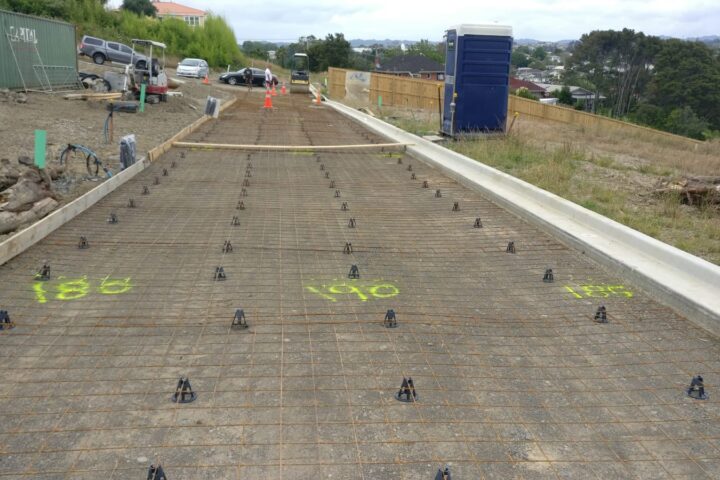Auckland, New Zealand’s largest city, has been undergoing a period of rapid growth and transformation. With the urban population steadily increasing, there is an ever-growing demand for new developments in Auckland to accommodate both residential and commercial needs. As the city continues to expand, these developments are shaping the future of Auckland, creating vibrant, modern communities while addressing the challenges of urbanization. From high-density housing projects to cutting-edge commercial spaces, new developments Auckland are driving a significant shift in the city’s landscape. In this article, we will explore the latest trends in Auckland’s development scene, examine the factors driving this growth, and highlight what you can expect in the coming years.
The Rising Demand for New Developments in Auckland
Auckland’s population has been growing rapidly, contributing to the demand for new housing, commercial spaces, and infrastructure. This population boom is largely due to both internal migration within New Zealand and increasing numbers of international residents. The city has become a hub for both work and lifestyle, with residents seeking proximity to urban amenities while also desiring access to green spaces and recreational opportunities.
Auckland’s property market is booming, making it a prime location for developers to build new residential communities. There is a particular emphasis on the development of high-density housing, such as apartment complexes and townhouses, to make better use of the city’s limited space. As the city expands, new developments also reflect Auckland’s growing diversity, with developments that cater to various needs and preferences.
Key Trends in Auckland’s New Developments
Urban Renewal and Regeneration Projects
Auckland is focusing on rejuvenating older parts of the city. This is often referred to as urban renewal or regeneration. Many of these projects aim to enhance existing neighborhoods by transforming outdated properties into modern spaces. One of the main goals of this regeneration process is to make use of previously underdeveloped or underused areas, such as industrial zones, and convert them into vibrant residential or mixed-use communities.
Projects like the Wynyard Quarter development in the city’s waterfront area have turned disused industrial land into a modern urban hub with waterfront cafes, luxury apartments, and green spaces, contributing to Auckland’s ongoing urban renewal efforts. This trend is expected to continue as Auckland seeks to balance growth with sustainability.
Green and Sustainable Developments
Sustainability has become a key consideration in the design and construction of new developments. More and more projects in Auckland are focusing on environmental responsibility, whether through the use of eco-friendly materials, energy-efficient designs, or green spaces that enhance the city’s livability.
For instance, there are increasing numbers of “green buildings” being constructed that comply with sustainability standards such as the New Zealand Green Building Council’s Green Star ratings. These buildings incorporate features like solar panels, water-saving technologies, and well-designed insulation, all of which help reduce their carbon footprint.
Smart City Technologies
Auckland is gradually integrating smart technologies into new developments. This includes smart homes with automation features that allow residents to control their living environment through their smartphones, as well as city-wide smart infrastructure that monitors traffic, waste management, and energy consumption.
Smart technologies are also transforming commercial properties. Offices are becoming more adaptable to the needs of modern businesses, with features such as automated lighting and temperature control, high-speed internet, and energy-efficient systems that make them more attractive to tenants.
The Impact of Government Policies and Regulations
The New Zealand government plays a significant role in shaping the city’s development landscape. Policies such as the Auckland Unitary Plan, which governs land use, zoning, and building regulations, have been instrumental in guiding development patterns across the city.
Recent changes in policy are aimed at increasing the availability of housing in high-demand areas. One notable example is the government’s push to increase density in suburban areas, encouraging developers to build multi-unit housing in traditionally low-density zones. This policy shift has helped open up more areas for development, and developers are responding with new housing solutions designed to meet the needs of Auckland’s growing population.
What to Expect in the Future of Auckland’s Developments
As Auckland continues to grow, new developments will focus on a more integrated approach to urban living. Future developments will increasingly combine residential, retail, and commercial spaces in one location, creating self-sustaining communities where residents can live, work, and play without needing to travel far from home.
With more projects under construction and several large-scale developments in the pipeline, such as the City Rail Link and new transport hubs, Auckland’s landscape will continue to change rapidly. It is expected that future developments will also prioritize the creation of vibrant public spaces that foster a sense of community and well-being.
Residential Developments in the Suburbs
One of the more exciting trends for future growth in Auckland will be the expansion of residential areas into the suburbs. As land in the city center becomes scarce, developers are increasingly focusing on suburban areas, building high-density townhouses, apartment complexes, and lifestyle villages that cater to the growing demand for affordable housing options.
Commercial and Mixed-Use Spaces
Alongside residential growth, commercial spaces in Auckland are expected to flourish. With the rise of digital technologies and a shift towards hybrid working models, the demand for flexible, innovative workspaces is also on the rise. This demand will likely influence the development of more mixed-use buildings, where commercial and residential spaces coexist in harmony.
In addition, business hubs and innovation districts are expected to grow in the coming years, driving economic activity and attracting international investments. As a result, new developments will contribute to Auckland’s positioning as a key business destination in the Asia-Pacific region.
Conclusion
Auckland’s new developments reflect the city’s ambitious plans for growth and sustainability. With increasing demand for housing and commercial spaces, urban renewal, sustainability efforts, and smart technologies will play vital roles in shaping the future of the city. By understanding these trends, residents and potential buyers can better navigate the evolving property landscape.











